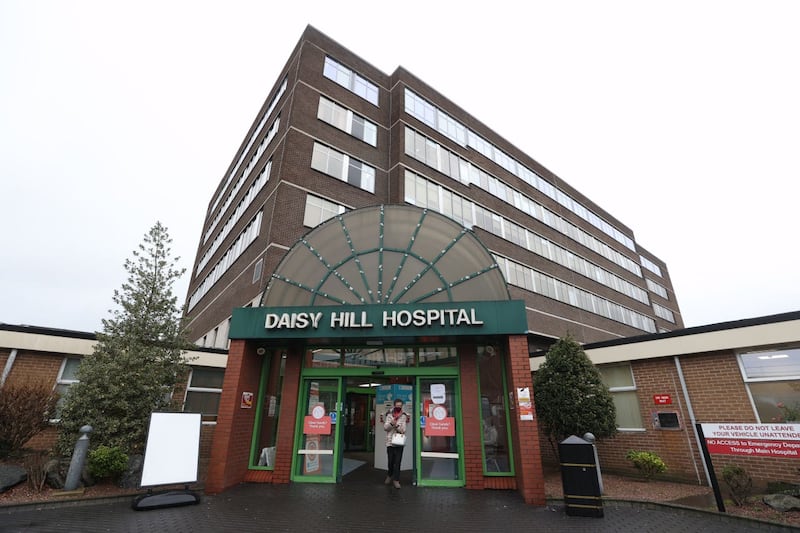My first mentor in journalism, John Healy, sometimes used a phrase to summarise wasted potential: a lighthouse in a bog, brilliant but useless. Does the handle apply to the South West Acute Hospital in Enniskillen, Co Fermanagh?
Recently a friend who spent several days in Craigavon Area Hospital couldn’t find a properly functioning shower near the ward. In 2012, when Enniskillen’s ‘21st century hospital’ opened, it was billed as the first facility in Northern Ireland to provide all single ensuite rooms for patients. It was four times the size of the Erne Hospital it was replacing.
Today it is a monument to unfilled potential. It has vast unused spaces. It struggles to recruit and retain staff, who can’t be guaranteed the volume of work they need to use and refresh their skills.
The definitive test of credibility is how a facility is viewed by the customers it is supposed to serve. Many in Enniskillen’s catchment area feel conned, as they are forced to travel long distances elsewhere for the care to keep them alive.
Enniskillen is the most glaring example of the border region’s collection of ‘almost hospitals and half-hospitals‘. The list includes Daisy Hill in Newry and the facilities in the likes of Dundalk, Monaghan, Cavan and Sligo.

For cross-border trade and travel, there is no frontier. But when it comes to co-operation between north and south in the delivery of public health care in border settings, there is a barrier infinitely more formidable than the trade border in the Irish Sea. It resembles the Berlin Wall of the Cold War era.
Part of the problem is health administrators and health professionals who are used to operating in their own patch and not encouraged to think beyond it. A scan of the political landscape highlights an absence of politicians who sit at the top table. The biggest name, former DUP leader Arlene Foster, is gone. The Gildernews are a brand in Fermanagh/South Tyrone: Michelle, the Sinn Féin abstentionist MP, is a candidate in the south’s European elections; her brother Colm is an Assembly member. Fine Gael TD Heather Humphreys is a senior government minister. Her Cavan/Monaghan colleague, Sinn Féin’s Matt Carthy, aspires to be one.

But there is an absence of a big political beast with the drive and the imagination to champion radical reorganisation of health service delivery.
Is such co-operation a pipe dream? Note what is happening in Derry/Donegal. Derry and Strabane District Council and Donegal County Council are becoming Siamese twins. They go everywhere together – Brussels and Washington included. The relationship between educational institutions at ATU Letterkenny and Magee College in Derry prospers.

Health co-operation is another shining example. Letterkenny Hospital is not a fully-fledged centre of excellence. It struggles to cope with its existing workload.
Rather than Donegal patients going to Letterkenny Hospital for services it doesn’t provide, or travelling tortuous, five-hour road trips to the region’s centre of excellence, the overcrowded Galway University Hospital, they are referred to Derry’s Altnagelvin Hospital.
- No plans to replace cross-border healthcare scheme, says new Stormont ministerOpens in new window
- All-island healthcare services under spotlight at major north/south eventOpens in new window
- Michelle O’Neill and Emma Little-Pengelly have to be a success together for the sake of both their parties – Tommie GormanOpens in new window
On so many levels, Donegal-Derry is becoming the prototype for sensible cross-border co-operation. The area captures huge swathes of the Shared Island fund, established by Micheál Martin when he was taoiseach. The travesty that took place in 1968 when a new university campus was built in Coleraine rather than Derry city is being revisited.
When it comes to co-operation between north and south in the delivery of public health care in border settings, there is a barrier infinitely more formidable than the trade border in the Irish Sea. It resembles the Berlin Wall of the Cold War era
The flow of investment to Derry-Donegal should help the reputation and the election prospects of SDLP leader Colum Eastwood MP, the successor of John Hume and Mark Durkan. Sinn Féin’s most famous Derry champion, the late Martin McGuinness, would delight in what’s happening.
In a coincidental example of serendipity, the current boss of the Shared Island unit is Derry native Émer Deane.
Is radical, much-needed reorganisation of health care delivery in the border regions beyond us? Look at what is happening in the private sector. A vital source of customers for the Kingsbridge Private Hospital in south Belfast are the thousands of patients organised by the Healy-Raes and Independent Michael Collins TD in Kerry and Cork and sent on buses for cataract surgery they can’t get locally in the public health service.

The procedures they access at Kingsbridge used to be subsidised under the EU Cross-Border Directive scheme. After the UK, Northern Ireland included, left the EU, the Irish government found a special budget line to continue financing the service.
It’s not just individuals who are coming north to Kingsbridge, and to its Co Derry facility at Ballykelly, for life-enhancing surgeries. PDFORRA, the representative body of the Irish Defence Forces, is a significant user of the Kingsbridge facilities.

Irish soldiers, with knee, hip, elbow, hearing and sight issues acquired in the line of duty, get their ailments fixed in Northern Ireland. It so happens that the PDFORRA manager who developed the scheme, Damien Quigley, is a native of Derry.
Robin Swann earned a deserved reputation for competence as Minister for Health during the worst phases of the Covid pandemic. Does he now have the appetite, the departmental advisors, an Assembly and a Stormont Executive, to stretch beyond traditional barriers and boundaries?
Derry’s Altnagelvin has significant new funding in return for serving a cohort of patients. It is a sensible arrangement. There is a compelling case to explore doing the same with South West Acute Hospital, Enniskillen and Daisy Hill Hospital, Newry.



